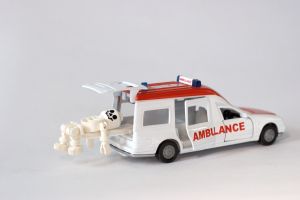
A recent radio interview with Dr. John Rich caught my ear the other day. He was explaining why he wrote the book, Wrong Place, Wrong Time. After watching young black men stream through Boston City Hospital’s ER with gunshot and knife wounds, he started listening to their stories.
Wrong Place, Wrong Time
He learned that many of the young men were just in the wrong place at the wrong time–maybe at a bus stop or a party and ended up in the line of fire when violence broke out. And it didn’t take much for violence to break out in the highly charged atmosphere where many of the young men lived.
Rich says he ” came to realize that many of the men who had been injured also suffered emotional wounds, similar to those of combat veterans. Symptoms like nightmares and flashbacks contributed to a feeling of jumpiness and unease — and often put these young men at risk for even more violence. When you are hyper-vigilant or jumpy, or always on guard, you can go from 0 to 60 in a very short time. So a young person who is on the bus, somebody steps on his foot and suddenly somebody gets stabbed or shot.”
Post-Traumatic Stress Disorder
My ears perked up at that description. Dr. Rich was describing Post-Traumatic Stress Disorder (PTSD), the condition our son developed after undergoing seven surgeries and hundreds of procedures before he was five years old. His hyper-vigilance and unstable behaviors escalated throughout adolescence. A little over a year ago, he went through a week of intense, one-on-one treatment at the Intensive Trauma Therapy Institute and is now emotionally healthy and stable.
Trauma in the ER
Because of our son’s experience, I found a paragraph in the excerpt of Rich’s book about what the young, black men experienced when in the ER fascinating. He first described ER protocol. “The treatment of trauma is arguably the most highly standardized and choreographed treatment in medicine. There is little room for variation or creativity in the process. As a result, every trauma patient gets the same assessment, the same tests.”
Then, after describing the terrifying ER procedures endured by one young man, he wrote, “Several impressions struck me as I walked out of the emergency department to my car. The first was that in the rush to save this young man’s life, very few words were spoken to him, and he said very few words in return. “I’m cold” were the only intelligible words that I could remember hearing the patient speak.”
What About Little Kids?
After hearing the report, all I could thing was that my son had experiences like that as a baby and toddler. If it’s scary for big, tough guys who already had PTSD from living in a violent world, no doubt repeated trips to the hospital caused and then exacerbated my son’s condition.
If you have a child who endures frequent, invasive medical treatment be aware of the signs of PTSD. Ask to speak to the child life specialist at the hospital about how to avoid and treat it. If you suspect your child has PTSD, visit Intensive Trauma Therapy website for more information about treatment options. Our child was twenty-six before he went through the treatment that changed his life. He wants your child to receive healing much sooner.
To listen to the entire radio interview or read the transcript, the complete story is available at www.npr.org.
Do you like what you see at DifferentDream.com? You can receive more great content by subscribing to the quarterly Different Dream newsletter and signing up for the daily RSS feed delivered to your email inbox. You can sign up for the first in the pop up box and the second at the bottom of this page.


